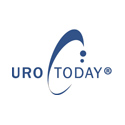METHODS AND MATERIALS: Eighteen consecutive patients accrued to an ongoing clinical trial were identified according to either the nodal contouring strategy as described based on lymphotropic nanoparticle-enhanced magnetic resonance imaging technology (9 patients) or the current Radiation Therapy Oncology Group (RTOG) consensus guidelines (9 patients). Radiation consisted of 45 Gy to prostate, seminal vesicles, and lymph nodes, with a simultaneous integrated boost to the prostate alone, to a total dose of 67.5 Gy delivered in 25 fractions. Prospective acute genitourinary and gastrointestinal toxicities were compared at baseline, during radiotherapy, and 3 months after radiotherapy. Each patient was retrospectively replanned using the opposite method of nodal contouring, and plans were normalized for dosimetric comparison. VMAT plans were also generated according to the RTOG method for comparison.
RESULTS: RTOG plans resulted in a significantly lower rate of genitourinary frequency 3 months after treatment. The dosimetric comparison showed that the RTOG plans resulted in both favorable planning target volume (PTV) coverage and lower organs at risk (OARs) and integral (ID) doses. VMAT required two to three arcs to achieve adequate treatment plans, we did not observe consistent dosimetric benefits to either the PTV or the OARs, and a higher ID was observed. However, treatment times were significantly shorter with VMAT.
CONCLUSION: The RTOG guidelines for pelvic nodal volume delineation results in favorable dosimetry and acceptable acute toxicities for both the target and OARs. We are unable to conclude that VMAT provides a benefit compared with IMRT.
Written by:
Myrehaug S, Chan G, Craig T, Weinberg V, Cheng C, Roach M 3rd, Cheung P, Sahgal A. Are you the author?
Department of Radiation Oncology, Sunnybrook Health Sciences Centre, University of Toronto, Toronto, Ontario; Department of Radiation Oncology, Princess Margaret Hospital, University of Toronto, Toronto, Ontario.
Reference: Int J Radiat Oncol Biol Phys. 2012 Jan 13. Epub ahead of print.
doi: 10.1016/j.ijrobp.2011.09.006
PubMed Abstract
PMID: 22245189
UroToday.com Prostate Cancer Section



